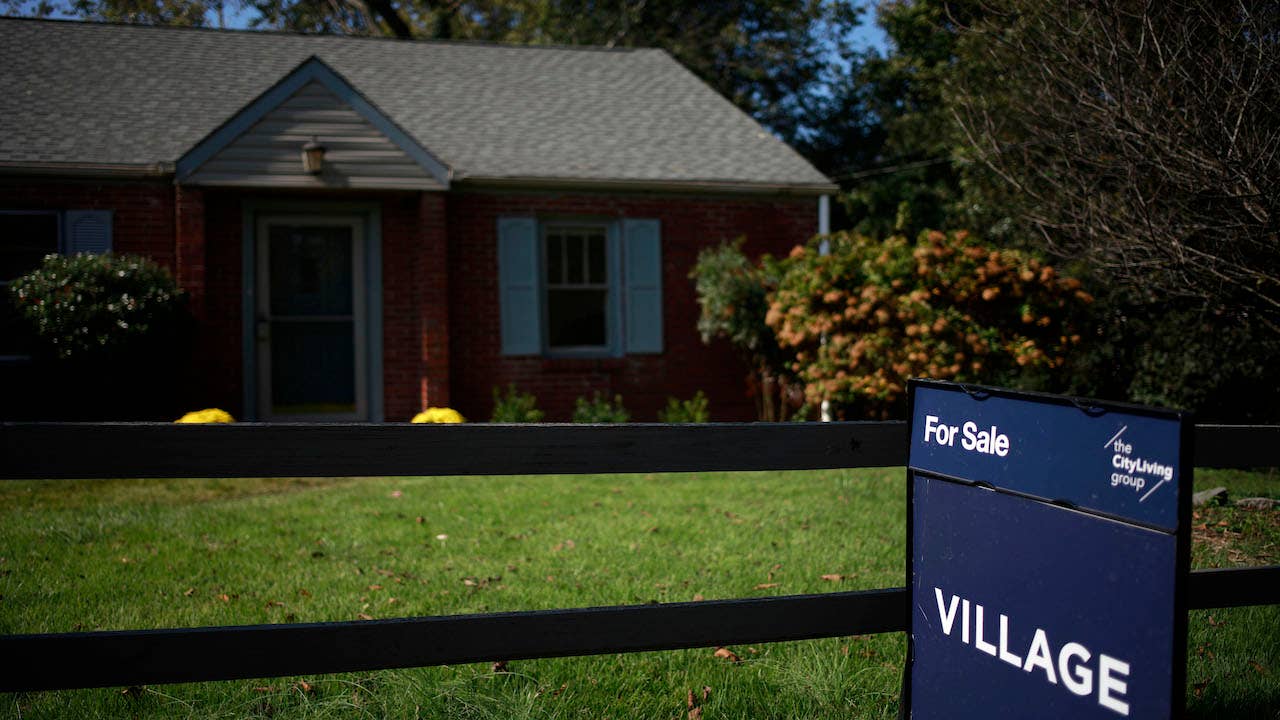Spring homebuying season kicks off with tight inventory, posing challenges for buyers

The Bankrate promise
At Bankrate we strive to help you make smarter financial decisions. While we adhere to strict , this post may contain references to products from our partners. Here's an explanation for .
The strongest seller’s market ever looks likely to remain in place for the start of the spring homebuying season, housing experts say. Home prices and sales have soared for nearly two years, and the number of properties on the market has plunged to a record low.
Sure, demand for housing might be dampened by the one-two punch of rising mortgage rates and an affordability squeeze. But supply – namely, the notable lack of it – is the biggest economic factor in the 2022 housing market.
At the end of January, just 860,000 homes were for sale nationwide, a 1.6-month supply that the National Association of Realtors calls the lowest ever.
“We’ve never seen fewer homes for sale than we have right now,” says David Berson, chief economist at Nationwide Insurance.
The tight supply is disappointing news for buyers hoping 2022 might bring some relief from the strong seller’s market, one that has been characterized by bidding wars and double-digit price increases.
“As of now, sellers are still in control,” says Nick Bailey, president and CEO of RE/MAX. “Buyers are absolutely in this sprint to get to the front of the line.”
Potential buyers – especially millennials – are in the game
Despite the challenges facing buyers, a significant chunk of American adults say they’ll be shopping for a home this year, according to a Bankrate survey.
In a poll of 2,449 adults in mid-February, Bankrate asked, “How likely, if at all, is it that you will be looking to purchase a home in 2022 (i.e., with cash and/or a mortgage)?”
Overall, 20 percent of U.S. adults are at least somewhat likely to shop for a home in 2022. Younger adults are more likely to buy this year, with 35 percent of millennials (ages 26-41) saying they’re actively looking. That’s compared to 15 percent of Generation X (ages 42-57) and just 7 percent of baby boomers (ages 58-76).
Millennials are now in their prime buying years. But compared to older generations, they’ve delayed homeownership.
“Millennials are no less interested in owning homes than their older brothers and sisters and their parents,” Berson says. “But for various reasons, they’ve put it off.”
Those reasons include the weak job market during and after the Great Recession, along with an overhang of student loans. Millennials also have waited longer to marry and have kids.
When it comes to buying plans, family situation also matters. One-third of parents with children under the age of 18 are at least somewhat likely to purchase a home this year, compared to 18 percent of non-parents.
Geographically, more Westerners (23 percent) and Southerners (22 percent) are at least somewhat likely to purchase a home in 2022, compared to just 16 percent of those in the Northeast and Midwest.
The pandemic upended normal buying patterns
In a typical year, hundreds of thousands of American homeowners spend the winter planning to put their homes on the market. They hire listing agents, scrub their homes and strategize about staging and pricing. The seasonal pattern is often driven by the school year – families want to be out of one home and into another by the time classes start in August or September.
The coronavirus stalled that rite of spring. In early 2020, the pandemic effectively canceled the spring selling season. And by 2021, the housing market was in full frenzy, a boom that changed the normal seasonal patterns organized around the school year.
The spring 2022 market might echo spring 2021 – and desperate buyers, realizing that sellers hold the cards, are getting a head start.
“Seasonality is over,” RE/MAX’s Bailey says. “I think the spring market already started.”
Why are so few homes for sale?
In most parts of the U.S., buyers will continue to navigate super-tight supplies.
“The inventory of homes on the market remains woefully depleted,” says Lawrence Yun, chief economist at the National Association of Realtors.
While homebuilders have tried to meet that demand, they face a number of headwinds. After overbuilding before the Great Recession, builders scaled back dramatically. Now, they find themselves without enough land to ramp up.
Also playing a role are labor shortages and supply chain hiccups – lumber, appliances, windows and garage doors all have been scarce during the pandemic. Even if they could ramp up, builders have shifted their focus to higher-priced homes. The most intense shortage is in the supply of homes priced at less than $500,000, Yun says.
For buyers, all of this means at least a few more months of upward pressure on home prices, housing economists say.
“The surge in mortgage rates is likely to take a bite out of the demand for housing, mostly among first-time buyers and those with limited budgets,” says Selma Hepp, deputy chief economist at real estate data firm CoreLogic. “Nevertheless, with demand remaining considerably beyond the available inventory, the pressure on home prices will remain strong, particularly as potential buyers fear further increases in mortgage rates.”
How to navigate this spring’s crazy housing market
Just to reiterate: Sellers are calling the shots. “It’s most definitely still an intense seller’s market,” says Kevin Parker, vice president at Navy Federal Credit Union.
If you’re shopping for a home, here’s how you can cope with challenging conditions:
- Shop hard for a mortgage. Buyers might not have much bargaining power when it comes to bidding for homes, but you can shop aggressively for the most advantageous home loan. Getting multiple loan offers can save you thousands of dollars over the life of the loan.
- Prepare for a bidding war. It’s not easy to avoid multiple bidding situations in today’s market, where buyers are paying tens of thousands of dollars over list price just to get a home.
- Go into the bidding with a plan. In the heat of battle, you can be tempted to boost your offer as you try to win. Before you get into a bidding war, set a clear ceiling on the amount you’re willing to offer for the property – and stick to it.
- Be careful about skipping inspections. To compete, many buyers have agreed to let sellers off the hook for any issues found by a home inspector. “Anytime you waive contingencies, you’re increasing your potential exposure,” Parker says. If you choose this path, don’t skip the inspection. You can waive the inspection contingency without waiving the inspection itself.
- Be prepared for the appraisal to come in low. In a hot market, buyers are willing to pay more than an appraiser thinks a home is worth. That throws a wrinkle into the deal and puts the borrower’s mortgage financing at risk. In cases of an “appraisal gap,” the buyer might need to come up with extra cash. “To salvage the transaction, buyers have two options: Either use additional savings to bridge the gap, or renegotiate the purchase price with the seller,” says Glenn Brunker, president of Ally Home. Kevin Quinn of First Internet Bank says loan officers are documenting borrowers’ reserves with this issue in mind – buyers should know in advance whether they can come up with extra cash.
Methodology
Bankrate.com commissioned YouGov Plc to conduct a survey of 2,449 adults. Fieldwork was conducted Feb. 16-18, 2022. The survey was carried out online and meets rigorous quality standards. It employed a non-probability-based sample using both quotas upfront during collection and then a weighting scheme on the back end designed and proven to provide nationally representative results.
Learn more:
Related Articles




Spring is homebuying season, but here’s why buyers who wait will get a better deal